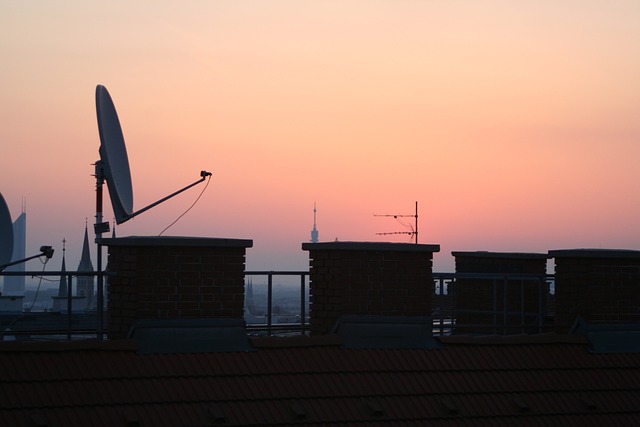Energy-efficient roofs are a strategic solution for homeowners aiming to reduce utility bills and shrink their carbon footprint. These innovative designs, featuring reflective materials, advanced insulation, and integrated solar panels, minimize energy loss through sunlight reflection, enhanced insulation, and temperature regulation. The benefits include lower electricity consumption, reduced greenhouse gas emissions, and long-term cost savings, making them a sustainable investment in today's environmentally conscious world.
Discover how an often overlooked aspect of home design, the roofing system, can significantly contribute to energy savings. In today’s eco-conscious world, ‘energy-efficient roofs’ are not just a trend but a practical solution with substantial benefits. This article explores the basics and advantages of this technology, from reduced utility bills to its positive environmental impact. We’ll guide you through popular materials, design strategies, and installation tips, ensuring your roof works efficiently for years to come.
- Understanding Energy-Efficient Roofs: The Basics and Benefits
- Popular Energy-Saving Roofing Materials and Technologies
- Design and Installation Considerations for Optimal Energy Efficiency
- Long-Term Savings: ROI and Environmental Impact of Energy-Efficient Roofing
Understanding Energy-Efficient Roofs: The Basics and Benefits
Energy-efficient roofs have gained significant attention in recent years as a vital component in reducing carbon footprints and cutting down on utility bills. These innovative solutions aren’t just about aesthetics; they’re engineered to minimize energy loss, keeping homes warmer in winter and cooler in summer. The basic principle behind it lies in incorporating materials and technologies that reflect sunlight, improve insulation, or actively regulate indoor temperatures.
The benefits are far-reaching: from lowering electricity consumption for air conditioning and heating, to reducing greenhouse gas emissions. Additionally, many energy-efficient roofing options offer long-term cost savings, making them a smart investment for homeowners looking to make their properties more sustainable. As environmental concerns continue to mount, adopting these advanced roofing solutions is not just a trend but a responsible step towards a greener future.
Popular Energy-Saving Roofing Materials and Technologies
In today’s eco-conscious world, choosing energy-efficient roofing materials is a smart step towards reducing your carbon footprint and saving on utility bills. Popular options include cool roofs, which are designed to reflect sunlight and absorb less heat, thereby lowering the amount of energy needed for air conditioning. These roofs often incorporate reflective coatings or lightweight materials like foam and aluminum.
Another innovative technology gaining traction is smart roofing systems that integrate solar panels into the roof structure. These panels not only generate clean energy but also contribute to a more substantial energy offset. Additionally, advanced insulation materials play a crucial role in creating an efficient energy-saving envelope. High-performance insulation reduces heat transfer, ensuring indoor spaces remain comfortable while minimizing the load on cooling systems.
Design and Installation Considerations for Optimal Energy Efficiency
When designing and installing a new energy-efficient roof, several factors come into play to ensure optimal performance. One key consideration is selecting materials that offer superior insulation properties. Reflective roofing membranes or tiles can bounce sunlight and heat back into the atmosphere, keeping the interior cooler during warmer months. Additionally, a well-insulated underlayment acts as a protective barrier against extreme weather conditions while improving energy efficiency.
The installation process also plays a crucial role. Proper flashing and sealing around roof penetrations prevents heat gain or loss through these areas. Professional installers ensure that all joints and seams are sealed tightly to maintain the integrity of the energy-efficient system. Moreover, proper ventilation is essential to regulate roof temperatures, reducing the load on cooling systems and further enhancing energy savings.
Long-Term Savings: ROI and Environmental Impact of Energy-Efficient Roofing
When investing in an energy-efficient roof, it’s not just about immediate cost savings; long-term benefits are significant. The return on investment (ROI) for such roofing solutions is substantial, as they reduce utility bills over time. Energy-efficient roofs are designed to reflect sunlight and insulate better, which leads to lower cooling and heating expenses for homeowners and businesses alike. This simple yet powerful upgrade can save a considerable amount of money annually.
Beyond financial gains, energy-efficient roofs have a positive environmental impact. By reducing energy consumption, these roofs contribute to lowering greenhouse gas emissions, helping to combat climate change. In many cases, the use of eco-friendly materials further minimizes the ecological footprint, making it an environmentally conscious choice. So, while saving on energy costs is a tangible benefit, adopting energy-efficient roofing also plays a part in preserving our planet for future generations.
Energy-efficient roofing solutions offer a compelling combination of reduced utility bills and environmental benefits. By understanding the basics, exploring popular materials and technologies, considering design and installation best practices, and evaluating long-term returns on investment, homeowners and businesses can make informed choices that contribute to both energy savings and a more sustainable future. Implementing these strategies is not only beneficial for your wallet but also leaves a positive impact on the planet.
